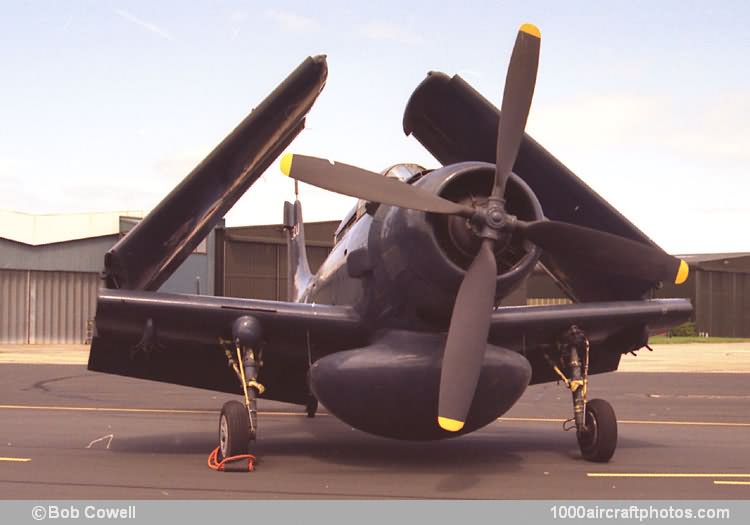11/30/2013. Remarks by Johan Visschedijk: "The three-seat radar-equipped carrier-borne radar picket Skyraider, fifty of which were supplied to the RN under the MDAP, first reached Great Britain in November 1951, and it at once filled an important gap in British naval aviation. Its great virtue was its ability to carry nearly a ton of powerful radar equipment, complete with pilot and two radar operators, and to act as an early warning airborne radar picket. No British aircraft capable of doing this job was then available to the RN and the Skyraider thus occupied a unique position.
The technique of using early warning radar aircraft from carriers was pioneered by the USN in WW II, initially in the Grumman Avenger. It extends the range of radar well beyond that of the aircraft-carrier's own installations and can protect a fleet at sea from low-flying surprise attacks, as well as providing direction for air strikes and aiding the anti-submarine force.
Characterized by its huge 'inverted mushroom' ventral radome, the 'Guppy' version of the Skyraider was designated AD-4W in the USN and AEW Mk.1 in the RN. It was one of many variants of the original AD-1 (initially XBT2D-1) single-seat attack aircraft which first flew in April 1945. It was originally conceived in July 1944 as a replacement for the celebrated Dauntless dive-bomber.
The fifty Skyraider AEW.Mk.1s for the Royal Navy were originally allocated the British serials: WT943 to WT969, WT982 to WT987, WV102 to WV109 and WV177 to WV185. Twenty aircraft were delivered ex-factory (WT944 to WT963, original USN BuNos. 127942 to 127961) while the remaining thirty came from USN stocks. However, serials were incorrectly applied in the USA to five USN stock aircraft (using the last three digits of the BuNos.), which respectively appeared as WT097 (né WT943), WT112 (né WT982), WT121 (né WT983), WT761 (né WV108) and WT849 (né WV109). These five incorrectly applied serials were retained by the USN, their correct serials were not taken up.
The Skyraiders were pioneered in British service by No. 778 Training Squadron at RNAS Culdrose, Cornwall, and after intensive operational training, including carrier trials aboard HMS Eagle, were grouped into a first-line unit, No. 849 Squadron, in 1953. No. 849's Skyraiders operated with a Headquarters Flight, permanently based at Culdrose, and four operational Flights (A, B, C and D), each of four aircraft for detachment as separate units with carriers at sea.
An interesting sidelight on the Skyraider is that, pending its replacement by the Gannet AEW.3, it was the last example of a piston-engined aircraft (excluding helicopters) in first-line service with the RN. It was finally retired from first-line duties in December 1960.
The pictured aircraft was built for the USN as a AD-4W under the BuNo. 124121 and first flew January 24, 1951, in February it was assigned to USN squadron VC11 and in August 1952 it was transferred to VC12. In October 1952 it received a major overhaul at NAS Quonset Point, Long Island as it was selected for transfer under the MDAP to the UK. (Although allotted the serial WT983, the incorrect WT121 was applied and retained by the RN.) On September 15, 1953 it left NAS Norfolk, Virginia, aboard the USS Green Mountain State for RNAS Abbotsinch, Scotland, where it arrived on the 25th.
On March 18, 1954 it went to No. 849 Squadron and was coded "326", being recoded to "428" on July 6, 1956. Between October 30, 1958 and June 5, 1959 it was modernized and subsequently recoded "415". Just over a year later, September 22, 1960, the aircraft was retired and stored, being displayed at several Air Days. Subsequently the aircraft was in the air twice on April 21, 1972, both times slung under a Sea King while transferred to RNAS Yeovilton for preservation at the Fleet Air Arm Museum. November 13, 1999, it was removed from display and stored."
